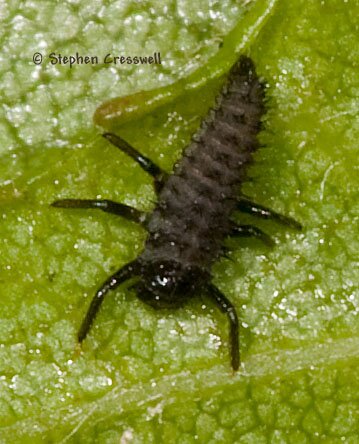
Most North American Ladybird Beetle larvae are aphid-feeders, as are the adults. Other food sources include scale insects, mealybugs, various insect eggs, and pollen.
The larva of Coleomegilla maculata, shown at right, is unusual for its ability to develop on an exclusive diet of pollen.
Ladybirds in the genus Epilachna feed on leaves. Both larvae and adults of this genus do considerable damage to crops, in contrast to other Ladybirds that are economically beneficial.
Like adults, the larvae of Ladybirds have chemical protection, and the orange coloration warns predators away. With their well-advertised chemical defenses, neither adults nor larvae waste time finding protected places to feed.
The larva and pupa of the Multicolored Asian Lady Beetle, Harmonia axyridis, is shown on a separate page.
Right: An early instar Ladybird larva.

Insects of West Virginia



